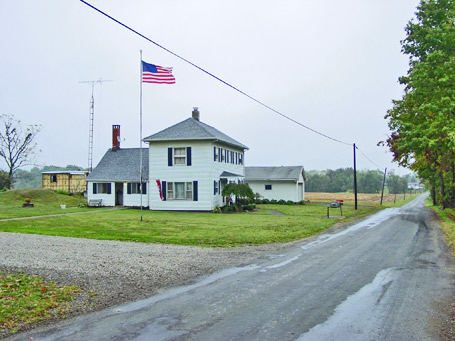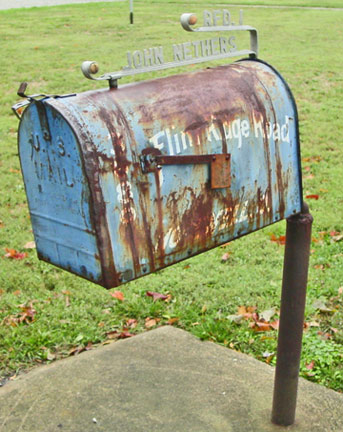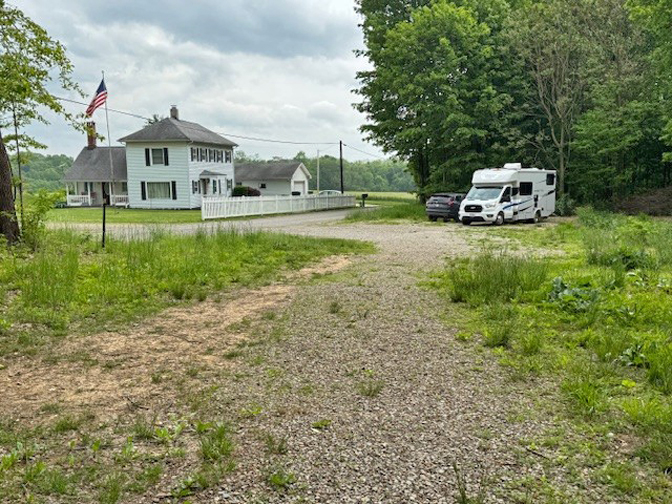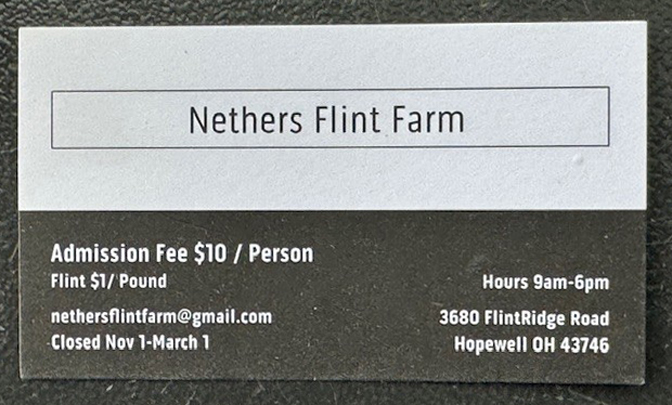|
Thirty five years - yowzer! That's how long it's been since I graduated from High School and it was time for yet another Charlevoix, Michigan class of 1975 reunion. Fortunately and unfortunately, Chrissy had just started a new job and was therefore not able to join me on my trip up North from Asheville, North Carolina - asking for time off after only 3 weeks on the job is a bad move unless you want to find yourself in the unemployment line again. In order to break up the 14-hour drive and take advantage of driving through the area, I decided to spend a day collecting lapidary material at the famous Nethers Farm near Zanesville, Ohio. The most famous deposit of flint in Ohio is an area in eastern Licking and western Muskingum Counties known as Flint Ridge. The Vanport flint of Pennsylvanian age covers a ridge top area of about 6 square miles. The flint deposit ranges in thickness from about 1 foot to 12 feet. Flint Ridge flint is noted for its array of colors and suitability for lapidary and flint knapping. Native Americans from throughout the Midwest made periodic pilgrimages to Flint Ridge. The purity of this rock permitted skilled workers to fashion a wide variety of tools, weapons, and ceremonial pieces. Artifacts made from Flint Ridge Flint have been found as far east as the Atlantic coast, as far west as Kansas City, and as far south as Louisiana. Before I continue with my story, let me address the names chert, flint and chalcedony. According to the Manual of Mineralogy 19th Ed., by Hurlbut & Klein, chert, flint and chalcedony are microcrystalline varieties of quartz. Chalcedony is the general term applied to fibrous varieties whereas flint and chert are granular varieties. Flint and chert resemble each other and there is no sharp distinction between them. However, dark, siliceous nodules, usually found in chalk, are called flint; whereas lighter colored bedded deposits are called chert. All three varieties of microcrystalline quartz exist on Flint Ridge.
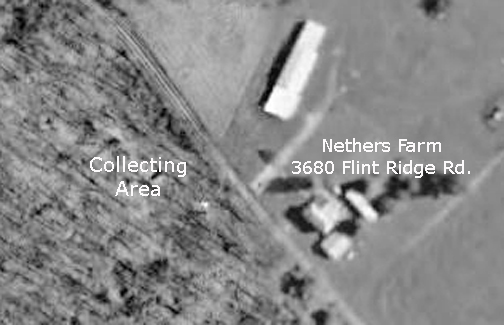 Aerial photograph from Google Earth
The Nethers Farm, located smack in the middle of the flint deposit, has long been open to "modern" rockhounds.
The two-track dirt road leading to the collecting area is directly across the street from the farm.
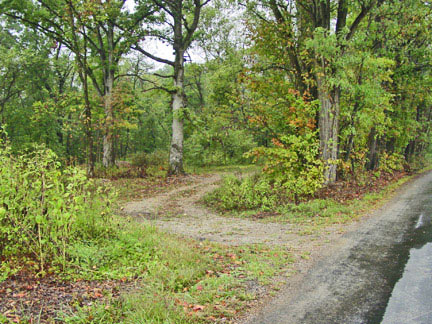 Entrance to collecting area On the left, as I entered the woods, I noticed an old pit surrounded by tons of broken rock. For those who may not want to venture or dig further into the woods, there is plenty of loose rocks that would make nice cabochons scattered virtually everywhere.
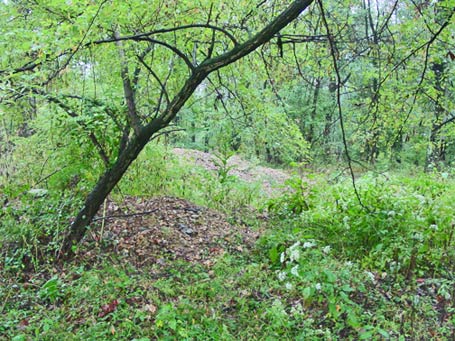 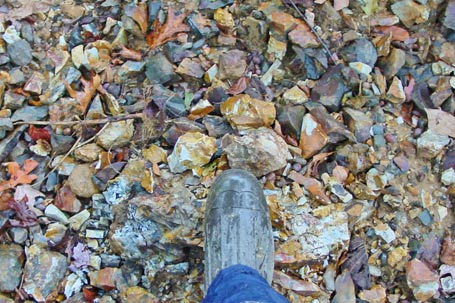 First pit area and rock As I continued to follow the two-track road for about 100 yards as it curved to the left into the woods, I came upon a series of pits surrounded by large piles of rock and dirt.
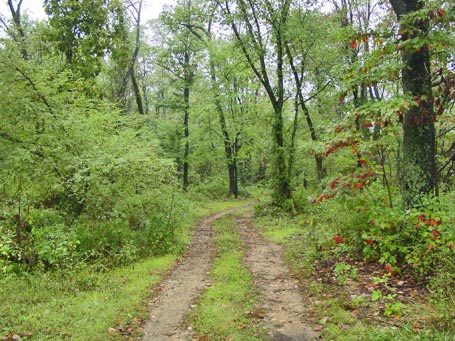 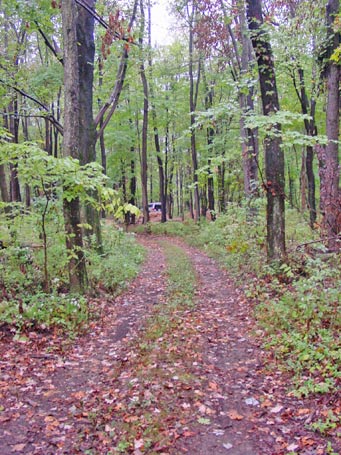 Entrance Road I parked between two relatively large pits and got out to look around.
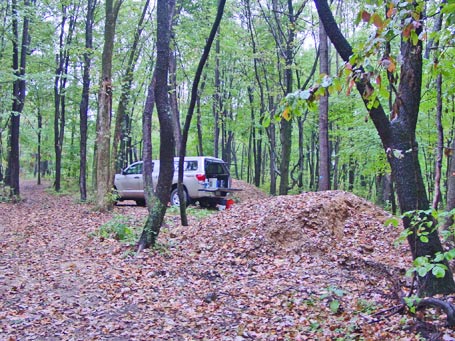 Parking Spot Having never been to this location before and with nobody there to show me the ropes, I followed my instincts into one of the pits and began to dig and break rock.
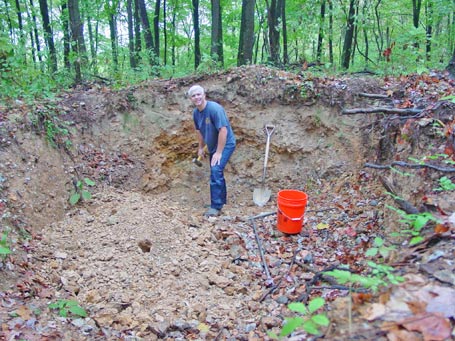 Yours truly in pit As I excavated the bottom side of the pit, I came across a layer of mostly light gray fractured chert with some superficial iron staining.
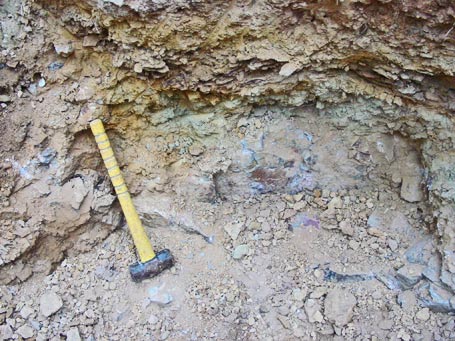 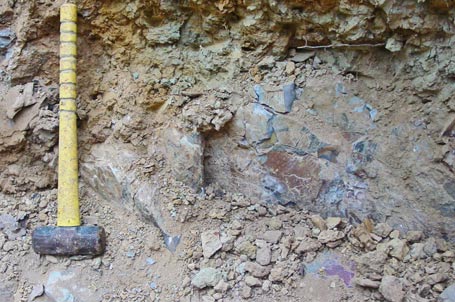 Uppermost Chert Layer Before making the trip, I had sought out advice from my Ohio friend, Mr. Jay Loch, who has been to the Nethers Farm many times. Jay told me that, if I dug, I'd run into a light gray layer on the first couple top feet and the more colorful rock was generally beneath it. So, with this in mind, I continued to break rock working my way downward. This required very strenuous hammer, chisel and prybar work because the rock was VERY hard. Fortunately, there were just enough fractures that could be used in just the right way to split and pry the rock, but boy was it brutal.
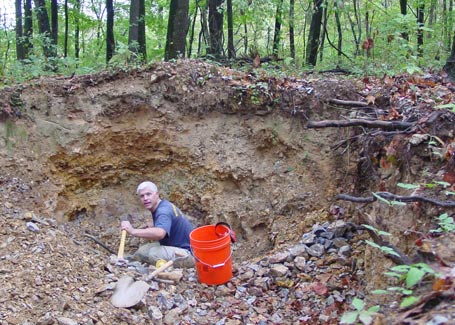 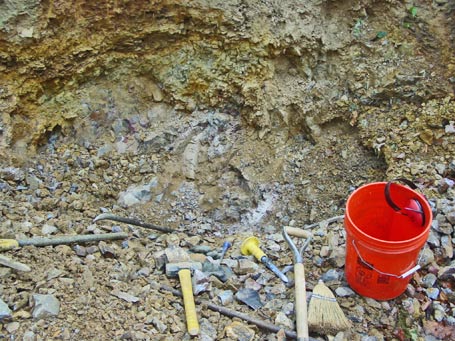 Deeper pit after digging As I continued slowly downward, I ran into rock with shades of dark gray, red, yellow, orange, white and brown. There were also vugs lined with sparking quartz crystal druse. I was excited because I figured this was the quality lapidary material I had hoped to find. I used a whisk broom to clear the dust and rock as I dug thus allowing me to see the cracks necessary to exploit the outcrop. By late-afternoon, my cramping arms screamed it was past time to quit banging, but not before I had accumulated a nice pile of colorful rock. I managed to fill two five-gallon buckets, not bad for about 6 hours of digging and banging.
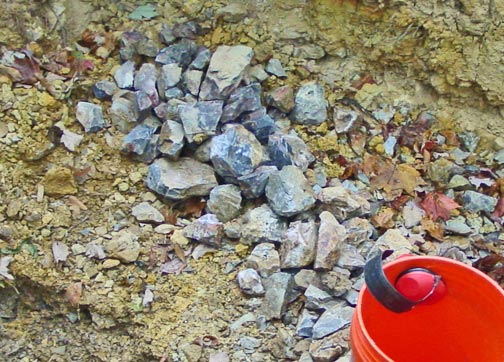 Keeper rock pile I loaded up everything in the back of the truck and returned to the side porch to do the weighing and paying part. I ended up with 110 pounds of killer rock, a near lifetime supply for only sixty bucks! I've been home since Sunday and so far have only had time to slab and cab a couple of the many rocks. But, if only a few of the rest are anything like what I've seen so far, I'll be beyond thrilled.
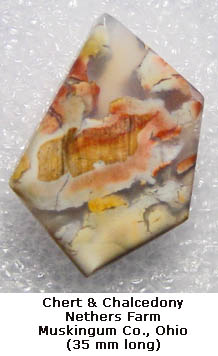
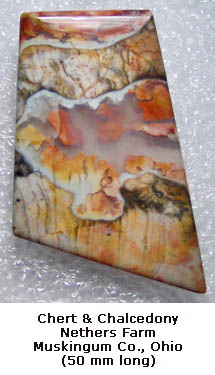
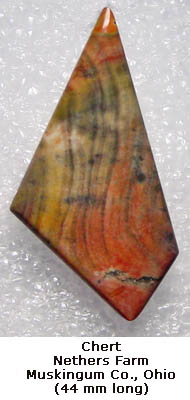
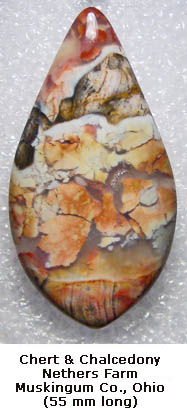 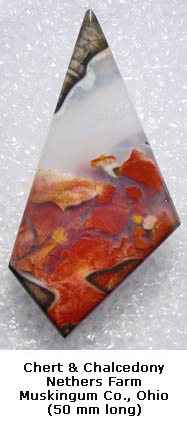
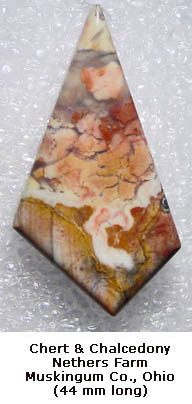
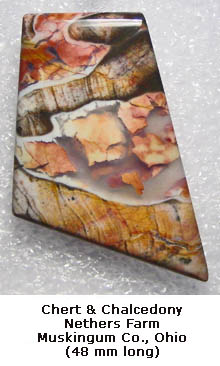
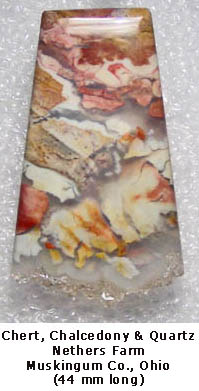
Update: It's been a little over a month since since I've been back home and I've made some more Nethers Farm cabochons, including a few vugochons (cabs with crystal vugs). You can see pictures of them on the next page.
Report continued . . . . . . .
|
